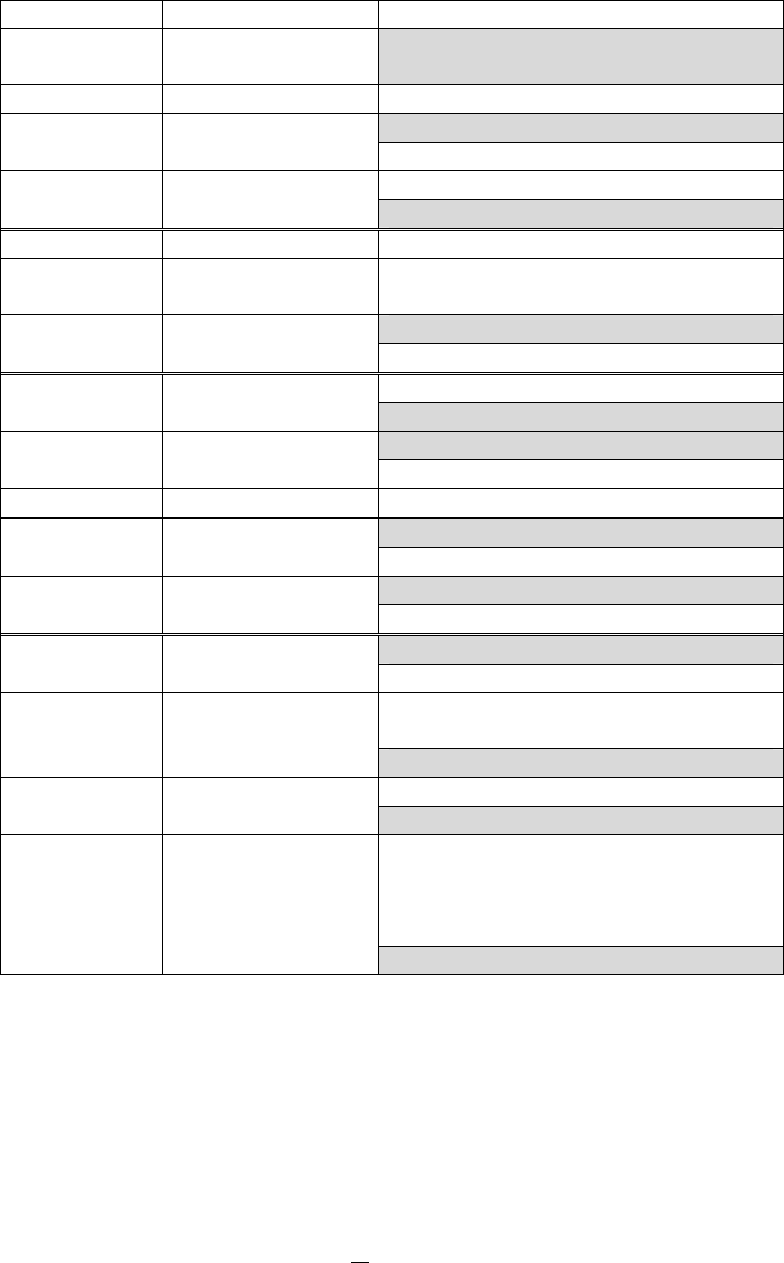Sensus Metering Systems TGB001HP BASE STATION TRANSCEIVER User Manual USERS MANUAL 2
Sensus Metering Systems Inc. BASE STATION TRANSCEIVER USERS MANUAL 2
Contents
- 1. USERS MANUAL 1
- 2. USERS MANUAL 2
USERS MANUAL 2

5015 B.U. Bowman Drive Buford, GA 30518 USA Voice: 770-831-8048 Fax: 770-831-8598
Transmitter Certification
Test Report
FCC ID: SDBTGB001LP/SDBTGB001HP
FCC Rule Part: CFR 47 Part 24 Subpart D, Part 90 Subpart I, Part 101
Subpart C
ACS Report Number: 05-0169-LP/05-0169-HP
Manufacturer: Advanced Metering Data Systems, LLC
Equipment Type: Base Station Transceiver
Model(s): TGB001LP
TGB001HP
Users Manual

1
To be used only for the purpose for which it is submitted. All rights reserved to AMDS LLC. Reproduction without written
consent is prohibited.
TGB 900Mhz
Users Manual & Operators Guide
Prepared by:
AMDS
2021 Lakeshore Dr.
Suite 414
New Orleans, LA 70122
PH: (504)304-2502

2
To be used only for the purpose for which it is submitted. All rights reserved to AMDS LLC. Reproduction without written
consent is prohibited.
1. DESCRIPTION
1.1. Purpose
The purpose of this document is to provide necessary information for use by
field personnel in the installation, operation, and troubleshooting of the
900MHz Cell Tower Gateway Basestation (TGB).

3
To be used only for the purpose for which it is submitted. All rights reserved to AMDS LLC. Reproduction without written
consent is prohibited.
1.2. FCC Class B Statement
“NOTE: This equipment has been tested and found to comply with the limits
for a Class B digital device, pursuant to Part 15 of the FCC Rules. These
limits are designed to provide reasonable protection against harmful
interference in a residential installation. This equipment generates, uses, and
can radiate radio frequency energy and, if not installed and used in
accordance with the instructions, may cause harmful interference to radio
communications. However, there is no guarantee that interference will not
occur in a particular installation. If this equipment does cause harmful
interference to radio or television reception, which can be determined by
turning the equipment off and on, the user is encouraged to try to correct the
interference by one or more of the following measures:
• Reorient or relocate the receiving antenna.
• Increase the separation between the equipment and receiver.
• Connect the equipment into an outlet on a circuit different from that to which
the receiver is connected.
• Consult the dealer or an experienced radio/TV technician for help.
Warning: Changes or modifications to this device not expressly approved by
AMDS could void the user’s authority to operate the equipment.
1.3. Industry Canada
This Class B digital apparatus meets all requirements of the Canadian
Interference Causing Equipment Regulations. Operation is subject to the
following two conditions: (1) this device may not cause harmful interference,
and (2) this device must accept any interference received, including
interference that may cause undesired operation.
Cet appareillage numérique de la classe B répond à toutes les exigences de
l'interférence canadienne causant des règlements d'équipement. L'opération
est sujette aux deux conditions suivantes: (1) ce dispositif peut ne pas causer
l'interférence nocive, et (2) ce dispositif doit accepter n'importe quelle
interférence reçue, y compris l'interférence qui peut causer l'opération peu
désirée.

4
To be used only for the purpose for which it is submitted. All rights reserved to AMDS LLC. Reproduction without written
consent is prohibited.
1.4. Specifications
1.4.1. Input Power
1.4.1.1. Voltage
20-28VDC (nominally 24V)
1.4.1.2. Input Current
8A max
Approximately 3A continuous
1.4.1.3. Alarms and Controls
Low-voltage alarm is asserted when output voltage drops below
22VDC.
Low-voltage disconnect is asserted when output voltage drops below
20VDC, re-connects when output voltage exceeds 22VDC.
1.4.2. Environmental
1.4.2.1. Operating temperature
-40˚C to +85˚C
1.4.2.2. Storage temperature
-40˚C to +85˚C
1.4.2.3. Humidity
0% to 95%, non-condensing

5
To be used only for the purpose for which it is submitted. All rights reserved to AMDS LLC. Reproduction without written
consent is prohibited.
General
The TGB Transceiver is a high performance burst data radio system. The RF
receiver is configured to receive 3 distinct modulation schemes on 3 adjacent
frequencies in the 896 to 940 MHz frequency range.
The TGB RF Transmitter operates on a single configurable channel (12.5kHz,
13.6 KHz, or 25kHz authorized bandwidth depending on the channel and
FCC Rule section governing it’s operation) in the 935 to 960 MHz frequency
range. The transmitter utilizes yet another type of modulation scheme,
different from the three utilized by the receiver.
Transmitted and received data messages are short in nature, meaning that
the radio is intended for burst telemetry type of applications. Larger packets
may, however, be transmitted by sending successive packets.
The TGB operates as a multi-channel transceiver in a “cellular” type system.
The TGB assembles the received messages and forwards them to the TGB
Controller (one per city) via local phone lines. The TGB Controller eliminates
redundant messages (i.e., messages from endpoints that were received by
more than one TGB) before forwarding them to the NOC via a high-speed
connection (ISDN, T1, etc).
The TGB shall also notify the NOC of any alarm indications, such as
tamper/intrusion, temperature alarms, or power failure.

6
To be used only for the purpose for which it is submitted. All rights reserved to AMDS LLC. Reproduction without written
consent is prohibited.
1.5. Block Diagram
1.5.1. Power System
!!! Danger !!!
Hazardous AC voltages capable of producing severe electrical shock
are present at various locations in the TGB. Exercise caution when
working inside the enclosure, to assure that contact is not made with
and electrical termination.
!!! Warning !!!
The batteries are a source of energy and can be hazardous if
shorted. Exercise caution.
1.5.1.1. AC Power – Indoor
AC Power is supplied to the rectifier through a rack mounted power
strip with integral ON/OFF switch and surge protection.
1.5.1.2. AC Power – Outdoor
AC Power enters the outdoor enclosure through the bottom of the
cabinet. The rectifier plugs into the surge protected, GFI outlet located
in the bottom of the cabinet.
1.5.1.3. DC Power
The rectifier converts commercial power (120/220VAC) to
24VDC power to the equipment chassis, heat exchanger, fans,
intrusion alarm, and batteries. In the event of commercial power
failure, the rectifier provides uninterrupted DC power by switching over
to battery backup.
1.5.1.3.1. Fuses and Breakers
The TGB contains one 10A circuit breakers/disconnects—one to
protect/control power to the electronics chassis.
1.5.1.4. Grounding
The ground bus bar MUST be connected to the site’s HALO ground
using an insulated conductor of sufficient size. All transient voltage
protectors (antenna, commercial power, TELCO lines) are grounded to
this bus bar. Failure to properly ground the TGB equipment presents
a risk to not only the TGB electronics, but other customers’ equipment
at the site as well.
A qualified electrician should perform connection. Consult a local
electrician, or site engineer, for size requirements.

7
To be used only for the purpose for which it is submitted. All rights reserved to AMDS LLC. Reproduction without written
consent is prohibited.
1.5.2. Wiring Diagram
A copy of the wiring diagram is included in the assembly drawing located
at the end of this document.
1.5.3. Alarms
1.5.3.1. Intrusion
The enclosures are equipped with pin switches on both the front and
rear doors that activate and intrusion alarm when a door is opened.
The TGB notifies the TGB controller of the alarm.
A feature of the outdoor enclosures intrusion switch is the ability to
“pull out” the switch to cancel the alarm. The switch has a 30-minute
mechanical delay, after which the intrusion alarm will again be
asserted.
1.5.3.2. Temperature
The TGB is equipped with high (120F) and low (41F) temperature
alarms. The TGB notifies the TGB controller of the type of alarm.
1.5.3.3. Power System
The rectifier has several alarm outputs to signal different types of faults
associated with the power system.
Low Voltage Alarm – Asserted upon loss of AC Commercial Power.
Rectifier Failure – Asserted when DC output voltage is out-of-range.
Load Fuse Failure – Asserted when one of the load fuses (Fan, Heat
Exchanger, Intrusion Alarm) opens.
Battery Failure – Asserted when output voltage drops below
threshold, Low voltage disconnect is activated, or Bypass switch is in
Bypass position.
1.5.4. RF Subsystem
1.5.4.1. Spark Gap
The antenna bulkhead connector is a Gas Discharge Tube Surge
Arrestor designed to shunt lightening induced transients to ground;
thereby protecting the TGB electronics from damage. The arrestor
contains a replaceable gas tube element that should be inpected
regularly are replaced as necessary.
1.5.4.2. Cavity Filter
The cavity filter is a frequency selective device designed to protect the
RF front end from overloading by out-of-band signals. The cavity filter
assembly is tuned and assembled as a unit. No cables or connectors
should be changed/replaced, nor should any adjustments be made to
the tuning screws.

8
To be used only for the purpose for which it is submitted. All rights reserved to AMDS LLC. Reproduction without written
consent is prohibited.
1.5.4.3. RF Cabling
The RF cabling and connectors inside the TGB are selected due to
their low-loss characteristics. No cables or connectors should be
changed/replaced.
1.5.5. Electronics Assembly
The Electronics Assembly is the heart of the TGB radio. It contains all
of the RF and signal processing electronics housed in a single card
cage and provides for an interconnecting Backplane.
1.5.5.1. RF Assembly
The RF Assembly converts (using amplifiers, mixers and filters) the RF
signal from the antenna to an IF signal used by the A/D Assembly,
provides a high performance 1.25W Transmitter stage, and provides a
programmable clock signal for the A/D card . It also provides AGC
functions.
1.5.5.2. A/D Assembly
The A/D Assembly digitizes the IF signal from the Receiver Assembly.
The digitized information is then delivered to the CPC Assemblies.
1.5.5.3. CPC Assembly
The TGB contains 2 dual channel CPC assemblies, supporting a
number of different modulation schemes. The CPC assembly
performs filtering and demodulation of inbound messages and delivers
them to the fusion processor.
1.5.5.4. Fusion Processor Assembly
The Fusion Processor Assembly collects serial messages from all 4
CPC channels, combines them, and delivers them to the TGB
Controller.
1.5.5.5. DC/DC Supply
The plug-in DC/DC Supply converts 24VDC Power to standard
operating voltages (+3.3VDC, +5VDC, +/-12VDC).
1.5.6. Breakout Panel Assembly
The purpose of the Breakout Panel is to function as an interface between
the Fusion Processor and the “external world”. It provides a termination
point, and more importantly Transient Voltage Suppression, of signals
coming into the Fusion Processor. TVS devices protect all Alarm Inputs,
Modem Lines, and Ethernet Lines.
Signal I/O Function/Comments
POTS1
POTS2
Bi-directional POTS Modem Connections
Diagnostic Bi-directional DB9 Female connector wired as a

9
To be used only for the purpose for which it is submitted. All rights reserved to AMDS LLC. Reproduction without written
consent is prohibited.
Port DCE
Inputs 1-7 Inputs Contact Closure Alarm Inputs.
Ethernet Bi-directional 10/100Base T Ethernet Port
2. Installation
2.1. Ventilation
The outdoor enclosure is completely sealed from the outside environment
(NEMA 4). A heat exchanger is used to cool internal electronics.
The indoor enclosure is designed to circulate ambient air for cooling. Fans
inside the enclosure are designed to circulate air across the electronics and
power supply.
2.2. Electrical Connections
2.2.1. Grounding
Ensure that all connections to the Ground bus bar are secure. The bus
bar must also be connected to the site’s Halo Ground using the 8AWG
Green/Yellow cable provided with the TGB System.
2.2.2. Power/Battery
!!! Warning !!!
Do not make any connections with power applied to the system. The
batteries are a source of energy and can be hazardous if shorted.
Exercise caution.
Prior to connecting batteries, disconnect the battery cable from the right
hand side of the rectifier cabinet. Install batteries and connect jumpers to
battery terminals. Before reconnecting battery cable to right hand side of
rectifier cabinet, measure open circuit voltage between pins 1 & 2. The
voltage should be above 24VDC. If the voltage is below 22VDC, do not
proceed with connection—batteries must first be charged before
installation.
2.2.3. Antenna
The antenna connection is a Type-N female located on the top of the
indoor cabinet (bottom of the outdoor cabinet). The connector is a
bulkhead mounted surge arrestor rated at 90V.

10
To be used only for the purpose for which it is submitted. All rights reserved to AMDS LLC. Reproduction without written
consent is prohibited.
2.2.4. Data Link
The TGB supports several different communications backbones—a
single/dual modem (56K) connection or a 10/100BaseT Ethernet
connection. The modems and Ethernet connections are made through the
modular connectors on the breakout panel.
2.3. Initial Startup
Prior to applying power, ensure that all fuses are in place, the antenna is
connected and the data line (POTS or Ethernet) is connected.
After approximately 30 seconds, the Fusion Processor will complete its boot
up procedure, and the TGB will connect to the TGB Controller.
3. Operation
3.1. General
The TGB is designed to operate with minimal user intervention—even in the
event of commercial AC power interruption. Software in all programmable
devices can be uploaded, temperature and alarm status can be monitored,
and control parameters modified—all from a remote site via the internet.
3.2. Starting and Stopping
Prior to powering down the TGB Electronics, the Halt command should be
issued to the Fusion Processor. After the Fusion Processor has completed
shutdown, the TGB Electronics can then be powered-down by switching the
Chassis breaker/disconnect to the OFF position. To start the TGB Electronics
simply switch the Chassis breaker/disconnect to the ON position.

11
To be used only for the purpose for which it is submitted. All rights reserved to AMDS LLC. Reproduction without written
consent is prohibited.
3.3. Indicators
Indicator Location Description
INPUT OK Power Supply GRN – Input voltage within normal
operating limits
FAULT Power Supply RED – Output Voltage Fault
GRN – Fusion Processor Power OKPOWER Fusion Processor
OFF – Fusion Processor Power Fail
RED – Alarm Input Active IN1 thru IN7 Fusion Processor OFF – Alarm Input not Active
TRIP CPC Flash RED – Trip Detected
MSG CPC Flash AMBER – Valid Message
Received
GRN – CPC Power OK OK CPC OFF – CPC Power Fail
RED – System RESET Asserted RESET A/D OFF – System OK
GRN – A/D Power OK POWER A/D OFF – A/D Power Fail
OTR A/D Flash AMBER – Input Over-range
GRN – Receiver Power OK POWER Receiver OFF – Receiver Power Fail
AMBER – Synthesizer Locked LOCK Receiver RED – Synthesizer Unlocked
GRN – AC Power OK AC POWER
OK Rectifier OFF – AC Power Fail
RED – DC Output Voltage Out of
Range
RECTIFIER
FAILURE Rectifier
OFF – Normal Operation
RED – Load Fuse Failed LOAD FUSE
FAILURE Rectifier OFF – Normal Operation
RED – Output Voltage Low, or
Low Voltage Disconnect
Activated, or
Switch in BYPASS
BATTERY
FAILURE Rectifier
OFF – Normal Operation
Shaded areas indicate Normal Operation.
3.4. Low Voltage Alarm and Disconnect
Upon Commercial AC Power Failure, the TGB will immediately notify the
network via the AC POWER Alarm; at which time the system will begin
operating on battery backup. After duration determined by capacity of
batteries, charge state, temperature, and current draw, the output voltage of
the batteries will decrease.

12
To be used only for the purpose for which it is submitted. All rights reserved to AMDS LLC. Reproduction without written
consent is prohibited.
The system provides for local visual (BATTERY FAILURE) and remote
indication the system output voltage has fallen below a preset level. This
level is set at the factory at 24V. The alarm clears automatically when the
system output voltage increases above this level.
The Low Voltage Alarm is the final indication that the TGB system is about to
shut down. Once asserted the TGB will shutdown in approximately 8 hours
unless commercial AC power is restored..
4. Maintenance
4.1. General
The TGB is designed to require minimal maintenance. Care should be taken
to observe the appropriate precautions when working inside the TGB
enclosure.
!!! The circuit cards used in this equipment contain static sensitive
devices. Observe precautions for handling ESD sensitive items. A, ESD
wrist strap is located inside the front door of the TGB enclosure.
4.2. Preventative or Routine Maintenance
4.2.1. Surge arrestor
The antenna surge arrestor is of the gas discharge tube type. A gas tube
element may not always show outward signs of failure or degradation,
therefore routine maintenance and inspection is recommended. The gas
tube element can be replaced by simply removing the nut and replacing
the element. If the number of thunderstorms in an area is high, gas tubes
should be inspected more frequently. Gas tube degradation is dependant
on the number of strikes as well as the intensity of the strikes. As obvious
as it may seem, gas tube elements should never be inspected, or
replaced, when a thunderstorm is approaching or occurring.
4.2.2. Airflow
Without adequate airflow, TGB performance may degrade due to
increased temperature. At least once per year, the TGB enclosures
should be checked for proper airflow. This includes verifying operation of
all fans and ensuring that any air filters are free of dust and dirt.
4.3. Circuit Card Installation/Replacement
!!! The circuit cards used in this equipment contain static sensitive
devices. Observe precautions for handling ESD sensitive items. A, ESD
wrist strap is located inside the front door of the TGB enclosure.
Before replacing any circuit cards in the TGB Electronics Assembly (Chassis),
first halt the Fusion Processor, then after it has successfully shutdown, switch
the circuit breaker/ disconnect to the OFF position. Once the circuit cards

13
To be used only for the purpose for which it is submitted. All rights reserved to AMDS LLC. Reproduction without written
consent is prohibited.
are replaced, switch the circuit breaker/disconnect to the ON position to
restart.
4.4. Battery Replacement
!!! Warning !!!
The batteries are a source of energy and can be hazardous if shorted.
Exercise caution.
The batteries are rated for a 5-yr life at 25˚C and 27.5VDC float voltage.
Extended periods of operation above 25˚C will reduce battery life (rule of
thumb: 50% life reduction per every 10˚C increase. After this time it is
appropriate to have a change-out program. In the event of frequent deep
discharges it is possible that the batteries may require earlier replacement.
Prior to disconnecting batteries, disconnect the battery cable from the right
hand side of the rectifier cabinet. Remove jumpers from the battery terminals
and remove old batteries. Install new batteries and reconnect jumpers.
Before reconnecting battery cable to right hand side of rectifier cabinet,
measure open circuit voltage between pins 1 & 2. The voltage should be
above 22VDC. If the voltage is below 22VDC, do not proceed with
connection—batteries must first be charged before installation.
4.5. Battery Recharging
!!! Warning !!!
The batteries are a source of energy and can be hazardous if shorted.
Exercise caution.
The shelf life of the batteries is 6 months from the date of charge. If the
battery has been stored for more than 6 months, it should be recharged prior
to installation.

14
To be used only for the purpose for which it is submitted. All rights reserved to AMDS LLC. Reproduction without written
consent is prohibited.
5. Ordering Information and Parts List
5.1. Spares Kit
Description Manufacturer Part Number
Antenna Surge Arrestor Andrews APG-BNFNF-090
Gas Tube Andrews GASTUBE-090
Generator Plug Hubbell 2713
Bussmann GMT - 1 1/3 A 1 1/3A GMT Fuse Littlefuse HB481001.33
Bussmann GMT - 2 A 2A GMT Fuse Littlefuse HB481002
Bussmann GMT - 5 A 5A GMT Fuse Littlefuse H481005